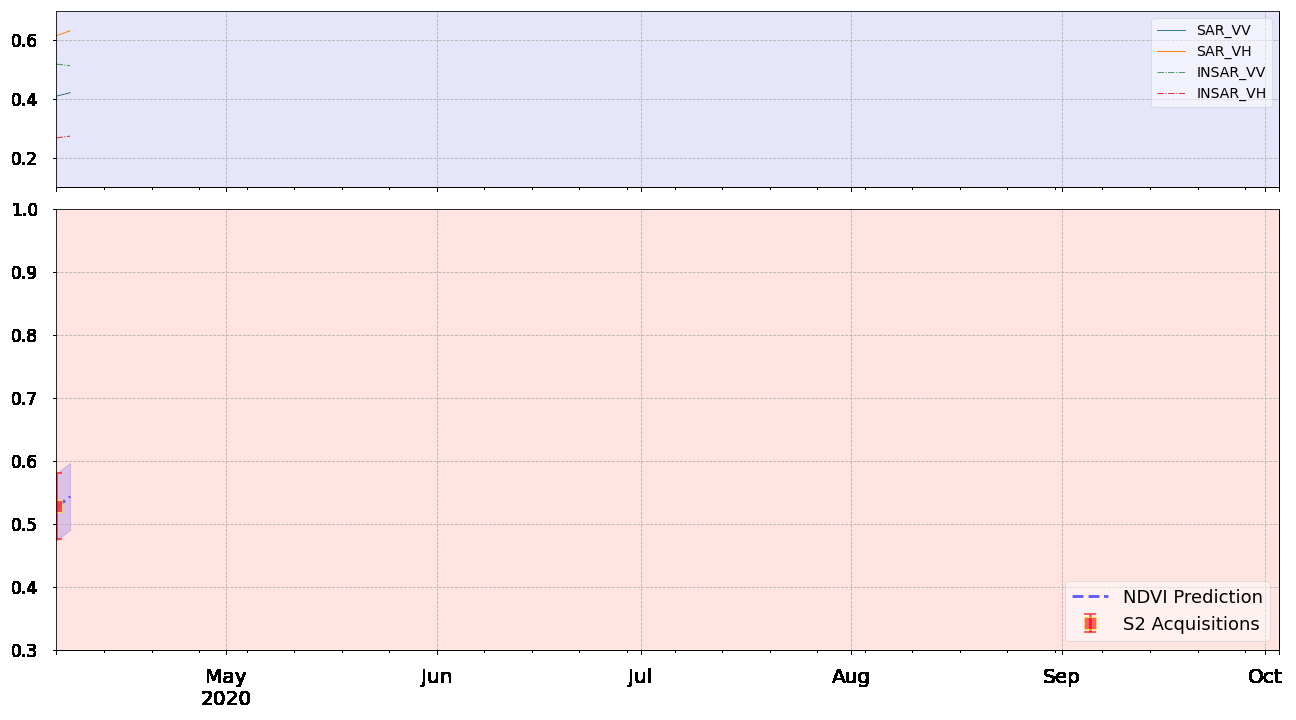Deep Learning for Cloud Gap-Filling on Normalized Difference Vegetation Index using Sentinel Time-Series
Iason Tsardanidis, Alkividis Koukos, Vasileios Sitokonstantinou, Thanassis Drivas and Charalampos Kontoes
The demand for uninterrupted optical time series is essential for the timely monitoring of changes taking place on agricultural land. Nevertheless, the continuity of the Sentinel-2 time-series is often hindered by intense cloud coverage, which is even more of an issue for northern European countries. A collaborative exploitation of both Sentinel-2 observations that are characterized as cloud free and the Sentinel-1 Synthetic Aperture (SAR) measurements which can be provided on a fixed time step can alleviate the current problem. Taking into consideration the ability of Deep Learning architectures to track temporal patterns and identify correlations between optical and SAR data, we apply a CNN-RNN based model that exports dense Normalized Difference Vegetation Index (NDVI) time-series of a static 6-day time resolution. The exported time-series are then applied on the very special case of grassland event detection task. In this study, pixel-level data from Lithuania extracted using CreoDIAS big data repository, demonstrated our model's capacity to provide dense artificially created NDVI time-series that can be deployed on the context of a fully operational scenario and improve the accuracy of event identification tasks in general. Moreover, it is shown as a robust methodology that can act as a filter that eliminates the abrupt changes and noise of NDVI time series due to cloudy observations that applied masks are frequently not able to detect. Finally this CNN-RNN architecture can be used also for events identification tasks that is trained and evaluated based on photo-interpretation instances.
The main purpose of this work is to use efficiently the SAR and InSAR measurements collaboratively with the available cloud-free NDVI observations collected. Finally, fully and dense NDVI time-series of standard 6-day time step are deviced under the scope to fill the existing gaps due to the extended cloud coverage.
The architecture is based on subsequent stacks of Convolutional Neural Networks (CNN) and Recurrernt Neural Networks (RNN). (see figure below)
An evaluation scheme took place on the impact of utilized the artificially-created NDVI time-series on the accuracy of detecting grassland mowing events. For this task, we used pixels/parcels that were annotated through blind photo-interpretation process from the area of Lithuania.
Additionally, based on the architecture above, a similar DNN model was designed for more effective identification of mowing events that uses as inputs the fully produced NDVI time-series in parallel with the SAR and InSAR data.
This repository contains code for the arXiv preprint: "Cloud gap-filling with deep learning for improved grassland monitoring" (arXiv:2403.09554)
Data is available at https://zenodo.org/record/11651601.



